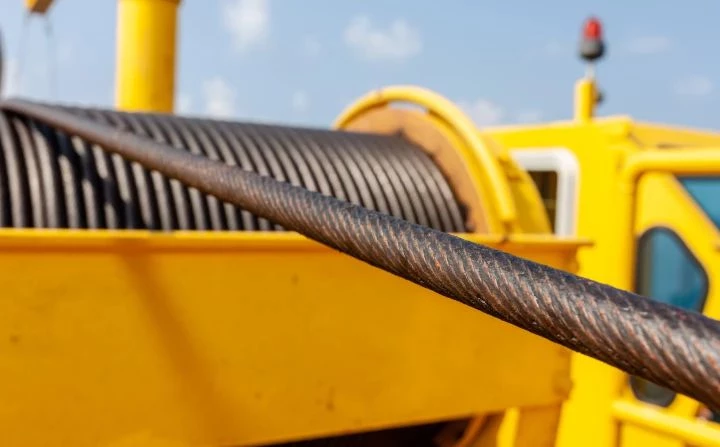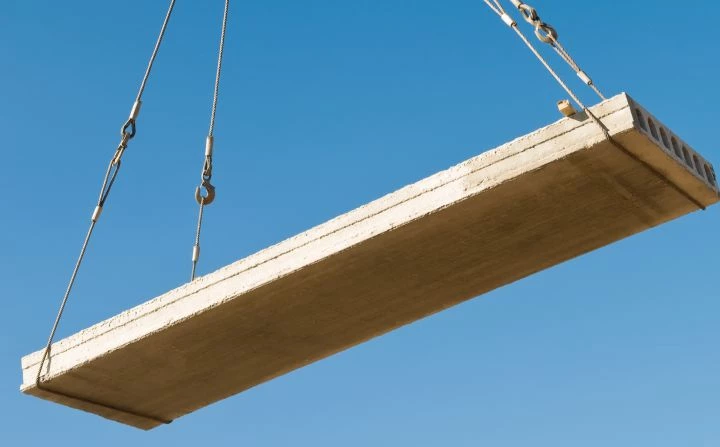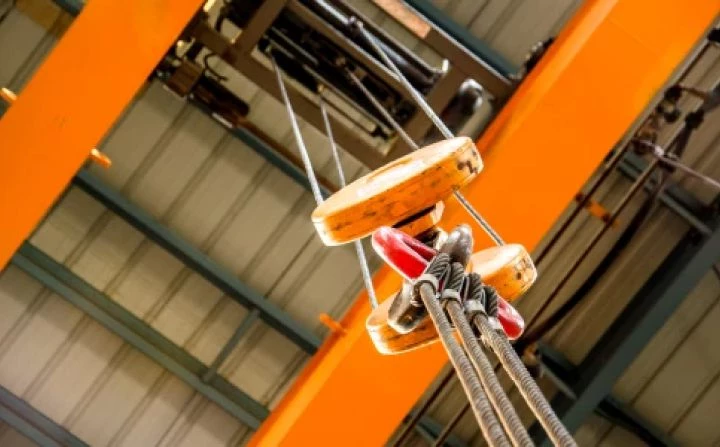
WIRE ROPE: WHAT MAKES IT SO SPECIAL?
Wire rope is composed of several strands of wire that are wrapped around a core. The particular combination of materials and strands will come down to the individual specification of the product. For example, a common layout is a 6×19, which means there are 19 wires in a strand, and the rope has six strands, totaling 114 wires. Another common example is 6×36 which is 6 strands, 36 wires per strand, totaling 216 wires.
Wire rope is omnipresent across a wide range of industries due to its many advantages over other ropes, steel shafts, and chains. This blog will take a closer look at the ultimate industrial multitasker and why it’s so highly regarded in so many fields.
1. Strength
The core benefits of wire rope are its strength and capacity to maintain that strength to a relative degree even when beginning to degrade. Due to the overlapping wrapping of the strands and wires, the material can consistently maintain heavy loads and numerous stressors, making it ideal for applications like suspension bridges, cranes, and elevators. This strength is necessary for holding weight providing operator safety and for the wire to transfer power between systems and mechanisms. Here are just some examples of the different types of wire rope and their strength:
2. Flexibility
Machines in motion, aerospace mechanisms, or pulley actions on construction sites are not simply a Point A to Point B process like a lever. They require precise, millimeter-accurate positioning and need a flexible material to reach every position on a 360-degree arc. Straight shafts or levers can be used, but the flexibility of wire rope in similar situations gives it a clear value. The benefits of wire rope, in terms of its flexibility, allow machinery designers and engineers to plan around a broader spectrum of capabilities.
It’s important to note that the more wires there are making up the nominal diameter, the more flexible the cable is. For example, a 1/2″ 6×37 class is twice as flexible as a 1/2″ 6×19 class. Additionally, the fiber core is more flexible than IWRC.
3. Wide Range of Uses
As we’ve broached above, one of the most obvious benefits of wire rope is its variety of applications. Common uses for wire rope include for hoisting (industrial cranes, construction, elevators), in the oil industry for moving and supplying power to rig machinery, in cable cars for ensuring user safety, in aerospace and automotive vehicles for moving and controlling parts, and in any industrial production setup that uses conveyor belts. These are only some of the applications of wire rope, and it’s likely you observe it in action dozens of times a day without even knowing it.
Wire rope assemblies are used in a wide range of industries, including:
In addition to the multitude of industries served, we have a network of suppliers for wire rope, cable, micro-sized cable, bungee, fittings, and related services to provide you with your specific custom cable or bungee assembly. Here is just a sampling of the ways our wire rope has been used:
- For private homeowners for deck railings, architectural railings as a fencing substitute.
- For car dealerships, a cable assembly to sell as a spare tire lockdown.
- For slot machines in the gaming industry, a push-pull control cable to use as part of the internal mechanism.
- For computer physical security applications, cable assemblies can secure laptops.
- For lumber freight train transportation, lumber trailer cable assemblies hold lumber in place.
- For a Fortune 100 retailer, cable assemblies are used to hang pictures.
As you can see, wires are quite literally all around us, and we enjoy the challenges of new applications and welcome your inquiries.
4. Abrasive Resistance
Abrasion is a major concern for any wire rope experiencing friction. One of the greatest benefits of wire rope is how its abrasion resistance can be improved, particularly in situations where abrasion is a large risk factor. Wire rope can be coated in polyvinyl chloride (PVC), polypropylene, HOPE, and nylon to improve its abrasive resistance. Abrasion resistance is also affected by its composition, with a smaller number of larger wires being more resistant than a wire rope of the same size with smaller wires. Abrasive resistance can also be improved via lubrication.
5. Versatile Composition
Similar to how wire rope has several coating options, another benefit of wire rope is the flexibility in its composition. Different metals are required for different applications. Bright wire rope is self-colored steel with lube. Galvanized steel is zinc coated. Stainless steel wire rope is available in type 302/304 and type 316.
6. Durability
Also among wire rope’s primary benefits is its durability in extreme situations. The stress from loads, the axial and torsional pressures on the material, and the fatigue and deformational pressures make other materials ineffective in performing the same roles. While wire rope will be affected by these stressors over time, its durability in lasting longer and sustaining more, even in extreme conditions, makes it such a popular choice.
Trust Wire Rope from Lexco
Wire rope is durable and flexible enough to be relied upon heavily in a vast number of industries. Among the many benefits of wire rope are its strength, versatility, deformation resistance, and stability. It is also advantageous due to its wide variety of applications and how many different options can be used for its composition. This means users can get exactly the wire rope they need for a specific application.
If you need to replace any wire rope you are currently using, but are unsure of its correct specifications, send us a sample and we will find an identical wire rope or an equivalent replacement. Additionally, you can download our wire rope specification sheets for free at any time. To find out more about how Lexco can fill your wire rope specifications, you can read more here, talk to our team, or review our wire rope FAQs.
